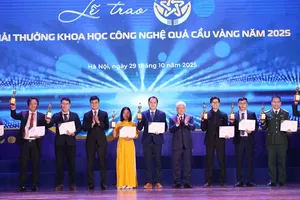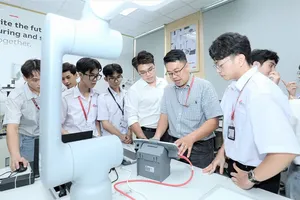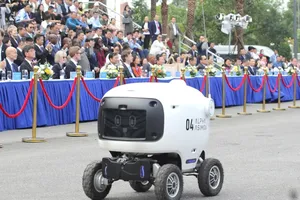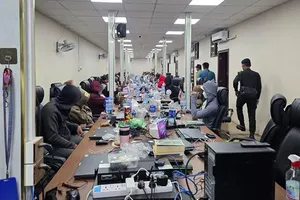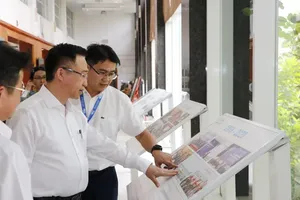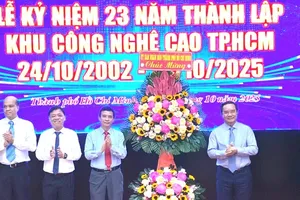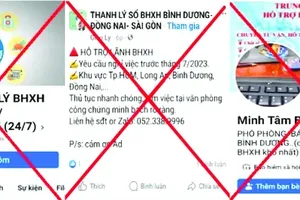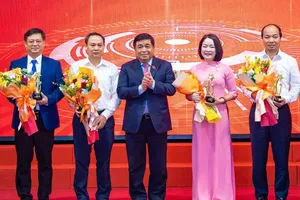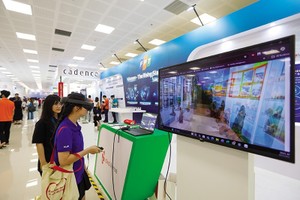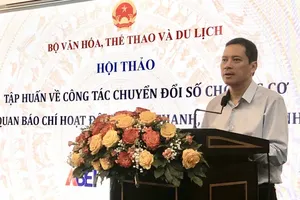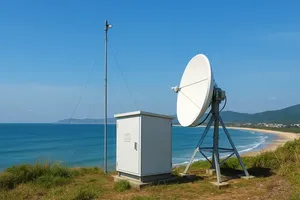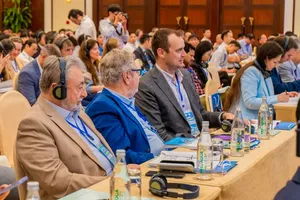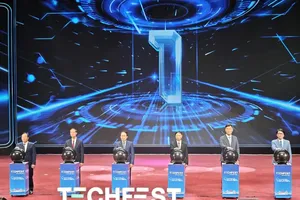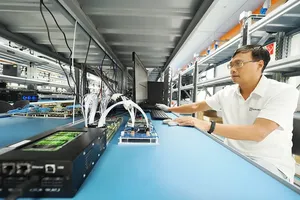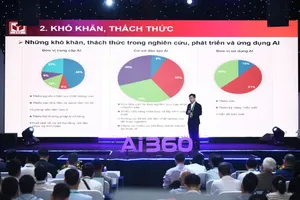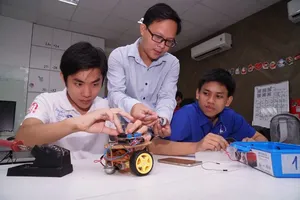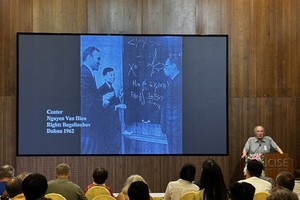Ten outstanding science and technology events in 2013 were announced by the Center for Science and Technology Communication under the Ministry of Science and Technology on December 26.
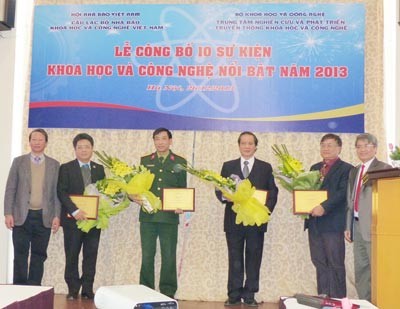
1. The Law on Science and Technology was approved by the National Assembly on June 18, 2013, taking effects on January 1, 2014. The Law demonstrates totally reformed views of management mechanism on science and technology.
2. Young Vietnamese engineers and researchers were successful in inventing first micro satellite Pico Dragon. Vietnamese-made micro satellite Pico Dragon, along with two other super-small NASA satellites, was sent to the International Space Station (ISS) by Japan's Kounotori-4 (HTV-4) cargo spacecraft. The satellite was put into orbit at 7.17 pm on November 19 (Vietnam time) and four hours later, it sent signals back to stations in Japan. After that, the station at the Vietnam National Satellite Center (VNSC) also received signal from the satellite.
The ‘Pico Dragon’ satellite measures 10x10x10cms and weighs one kilogram. It was manufactured by young engineers and researchers at VNSC
Vietnam’s first remote sensing satellite, VNREDSat-1, was launched into orbit at 9:06 am ( Vietnam time) on May 7.
VNREDSat-1 is tasked to capture images of all areas in Vietnam including mainland and the seas as well as to meet demand of monitoring flooding, forest fire, oil overflow and other incidents quickly and effectively.
Until September 4, it has taken over 9,200 photos of the country; accordingly Vietnam is not dependent on foreign suppliers like before.
3. For the very first time, with the help of their counterparts from the United Kingdom, Vietnam scientists were successful in decoding the genome research on 36 local rice varieties.
Research results have paved the way for inventing new rice varieties with high yield and resistance.
This research was carried out from January 2011 to June 2013 in the framework of an International Cooperation Program between the Vietnam Ministry of Science and Technology and the United Kingdom Biotechnology and Biological Sciences Research Council.
In the next phase, scientists of two countries will continue decoding the genomes of 600 local rice varieties.
4. Military-run Viettel Group, Vietnam’s largest mobile network operator, has so far supplied as many as high-tech military equipments to the army forces. In addition, it has also provide nearly 3,000 short wave mobile phones to different forces in 2013. Moreover, it has invented moderned devices.
5. Five Nobel laureates, Professor Ngo Bao Chau, the Fields Medal winner, and more than 200 domestic and international scientists arrived in central Binh Dinh Province from August 12-17 to attend the 9th "Meeting Viet Nam" event which was held by the Ministry of Science and Technology and the People’s Committee in Binh Dinh Province. “Meeting Vietnam” included four scientific symposiums where young Vietnamese scientists can learn more.
6. Vietnam July 3 returned the last remaining 16 kilogram of highly enriched uranium (HEU) fuel assemblies (FAs) from the Da Lat Nuclear Research Institute to Russia. Tens of Russian, American and Vietnamese scientists participated in the return.
7. On the sidelines of the 23th Asian summit in Brunei on October 10, Vietnam's Foreign Minister Pham Binh Minh and U.S. Secretary of State John Kerry October 10 made a compact to cooperate in nuclear energy for peaceful purposes ( the so-called "123 Agreement")
Le Dinh Tien, Vietnam's Minister of Science and Technology and Antony Stokes, British Ambassador to Vietnam, signed a memorandum of understanding on co-operation in peaceful use of nuclear energy on November 28. The memorandum has paved the way for co-operating on using nuclear energy for peace purpose.
8. Innovation Partnership Program in Vietnam (IPP) is financed jointly by Governments of Vietnam and Finland. IPP, an Official Development Assistance (ODA) program, aims to help Vietnam become an industrial nation in the trend of modernization by 2020.
The Fostering Innovation through Research, Science and Technology (FIRST) Project for Vietnam has been operated. The development objective of the project is to support science, technology and innovation (STI) in Vietnam by designing and piloting of STI policies, enhancing the effectiveness of project-aided research and development (R and D) institutions, and encouraging the development of innovative technology enterprises. The project has three components including knowledge and policy development; supporting Government Research Institutes (GRI) reform and enterprises innovation and project management.
9. The leading weekly, international scientific journal, Naturem has announced scientific findings of scientists from the National University in Hanoi in coordination with the US counterparts. Vietnamese scientists carried out research on arsenic contamination of Pleistocene aquifers.
10. The Vietnam Museum of Ethnology inaugurated the Southeast Asian Museum which is located in the premise of the Vietnam Museum of Ethnology on November 30 in Hanoi.
The new building is the first museum of cultures and lifestyles of Southeast Asian countries.
